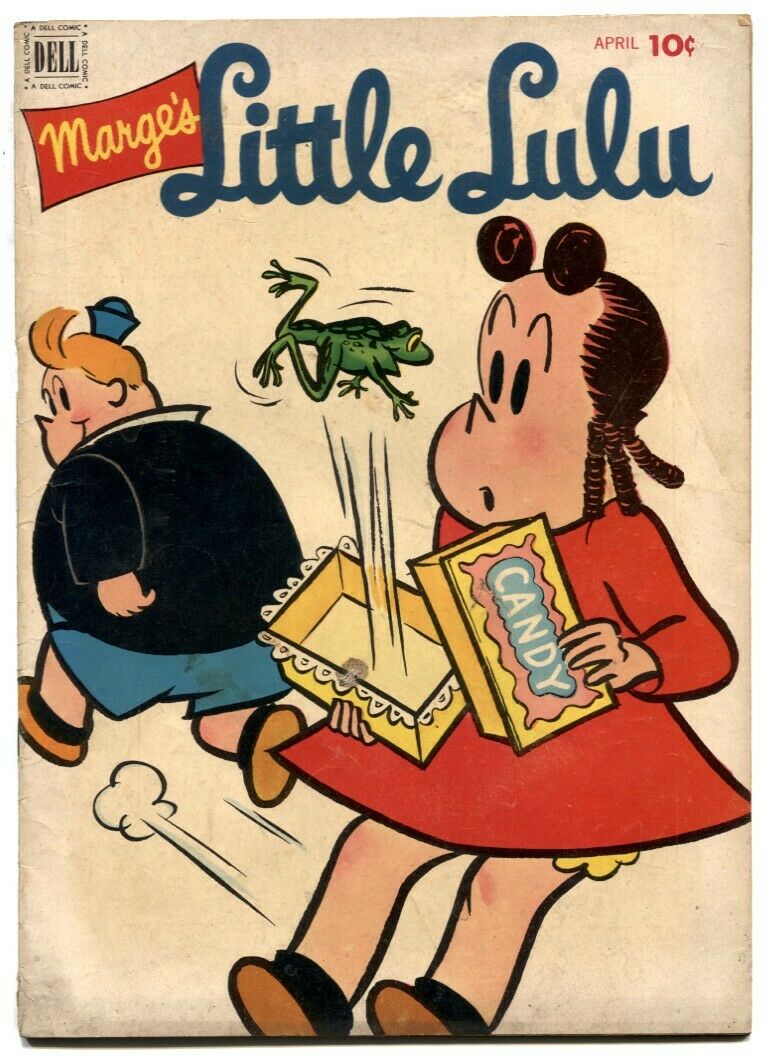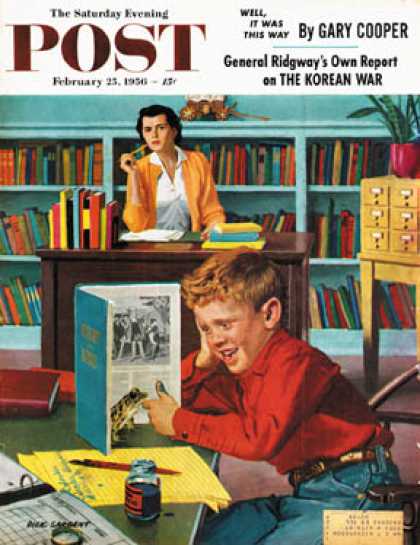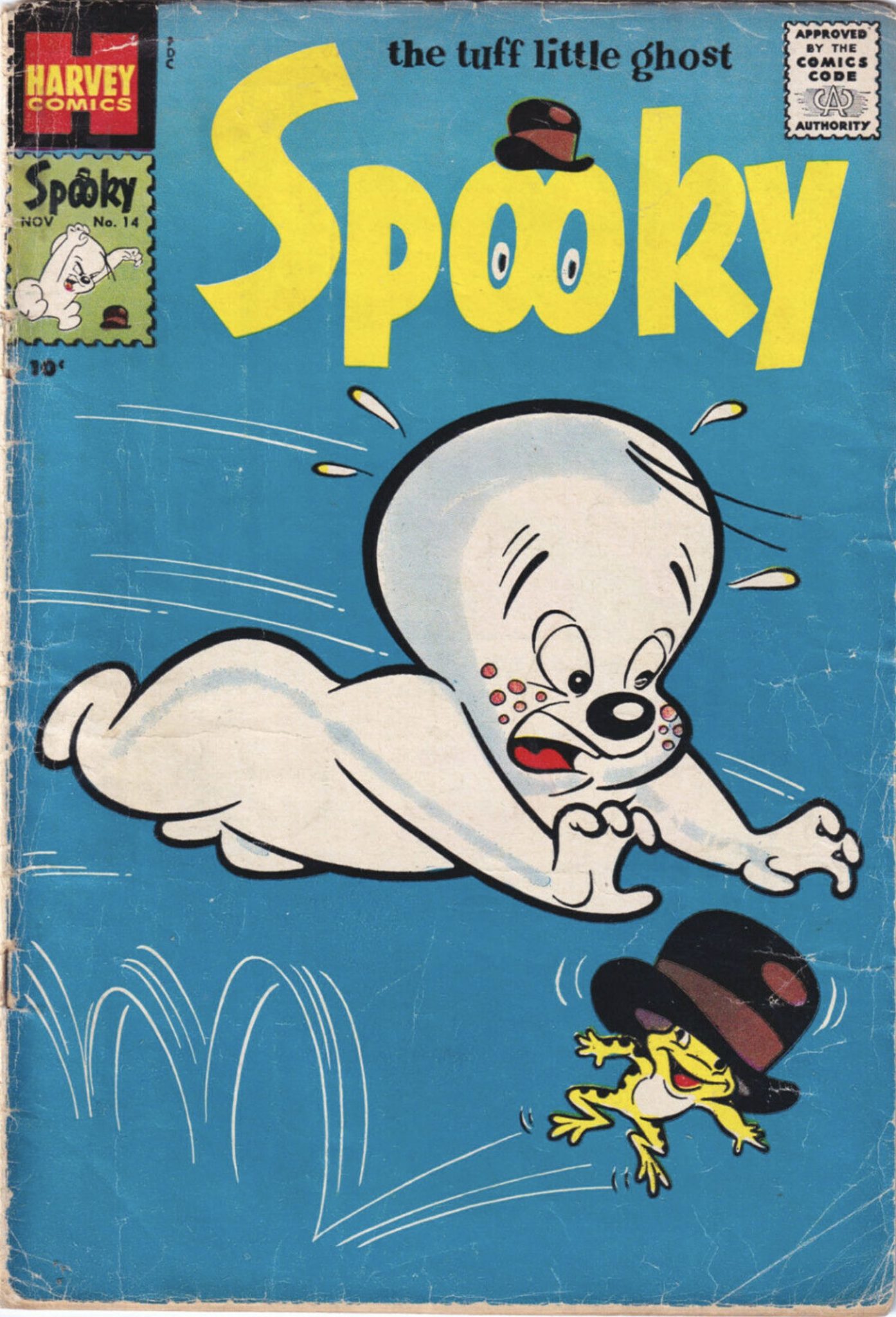Class Clown

1952 Little Lulu
One in a series of posts dedicated to pop-culture depictions of frogs — as symbolic representations of “too-muchness — from 1904–2003.
The rapscallion frog meme is emergent during the Forties, and will become dominant in the Fifties.

The (usually non-anthropomorphized) frog who — thanks to a mischievous child — disrupts a classroom, library, or some other space occupied by children but governed by adults, begins to show up frequently during the Forties. One assumes that this is an older meme — after all, the mischievous protagonist of Twain’s Tom Sawyer boasts that “I play with frogs so much that I’ve always got considerable many warts.” But my top-line research didn’t turn up any depictions of classroom-disrupting frogs before this point.

I wonder if the popularity of this meme — and the mischievous suburban boy meme, e.g., Hank Ketcham’s Dennis the Menace comic strip (or, for that matter, the UK strip of the same title that also premiered in 1951) — near the end of and immediately following WWII was some sort of response to anxiety about suburban American boys being “feminized” or otherwise malformed because they weren’t able to roam freely in nature, a la Tom Sawyer and Huck Finn?

See TV Tropes on the All-American Boy trope, and related tropes such as Babysitter’s Nightmare, Brats With Slingshots, Hates Baths, Real Men Hate Affection, Soap Punishment, etc.

The trope Boys Like Creepy Critters is particularly pertinent. Dennis the Menace, for example, has a pet frog that he smuggles with him. (Calvin, of Calvin & Hobbes, will explain that he seeks frogs because “I must obey the inscrutable exhortations of my soul.”) Bart Simpson, in one early episode, has a frog in his pants called Bart Jr. — a penis joke.

In a way, these impish children — beginning with Dennis in 1951 — are rapscallion frogs in human form, mischievously spreading chaos.

